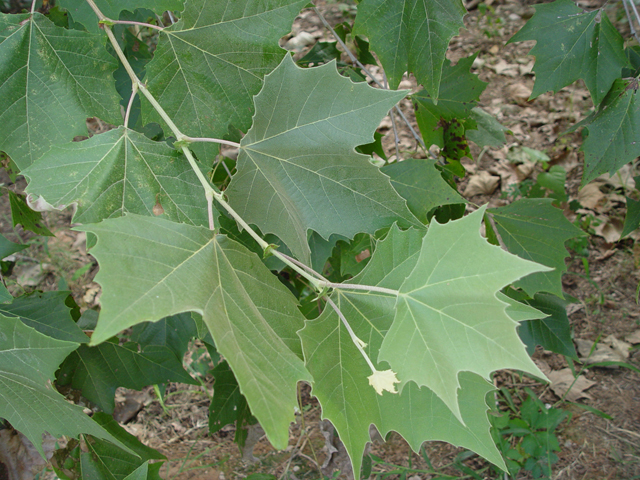- Home
- >
- Broadleaved Tree Seeds J-Z by Latin Name
- >
- American Sycamore (platanus occidentalis)
American Sycamore (platanus occidentalis)
SKU:
£1.35
1.35
13
£1.35 - £13.00
Unavailable
per item
Seed Prices
0.5 gram (approx 476 seeds) £1.35
1 gram (approx 952 seeds) £1.60
2 grams (approx 1904 seeds) £1.95
5 grams (approx 4760 seeds) £2.40
10 grams (approx 9520 seeds) £3.65
25 grams (approx 5950 seeds) £7.45
50 grams (approx 11900 seeds) £13.00
Use the drop down button below to select the seed quantity
Germination, Sowing and After care Information for
American Plane (platanus occidentalis)
American Plane seeds are dormant and need to be pre-treated before most seeds will begin to germinate.
First soak the seeds in water for 24 hours, and then drain them. Prepare a free draining substrate into which the seeds are to be mixed, this can be a 50/50 mixture of compost and sharp sand, or perlite or vermiculite. The chosen substrate needs to be moist (but not wet), if you can squeeze water out of it with your hand it is too wet and your seeds may drown and die.
Mix the seeds into the substrate, making sure that their is enough volume of material to keep the seeds separated. Place the seed mixture into a clear plastic bag (freezer bags, especially zip-lock bags are very useful for this Write the date on the bag so that you know when the pre-treatment was started. Place the seeds into the fridge for 12 weeks and mix them from time to time.
Prepare a seed tray ¾ filled with a good quality compost and firm if well with a short piece of wood to achieve a good even surface. These seeds must have light to enable successful germination to occur so they need to be sown on the compost surface, gently firmed, generously watered and left uncovered.
The seed tray then needs to be covered to retain enough humidity for the seeds to be able to germinate, this can be achieved simply by placing a sheet of glass over the tray -their should be a gap of at least 1 cm between the compost surface and the glass cover. Alternatively I made 5 short metal hoops to support transparent pallet wrapping film although a clear plastic bag would work equally well. This forms a tunnel over the seeds to retain the humidity.
After a day or so at room temperature the water vapor begins to condense on the inside if the film/glass indicating 100% humidity inside and the correct conditions for the surface sown seed to germinate. Keep the sown seeds out of direct sunlight.
After approximately a week kept at room temperature signs of germination should be visible. After another week or so covered by the film/glass sheet, the edges need to be lifted slightly to increase air circulation and start to prepare the seedlings for life under more normal conditions.
With good compost seedling development is quite rapid and developing seedlings can soon be re-potted individually remembering to keep them cool and moist and out of direct sunlight until they have become established.
Growth of between 8 to 30 cm or more is easily possible in the first growing season and after perhaps 2/3 years they are ready to be planted in their permanent position.
First soak the seeds in water for 24 hours, and then drain them. Prepare a free draining substrate into which the seeds are to be mixed, this can be a 50/50 mixture of compost and sharp sand, or perlite or vermiculite. The chosen substrate needs to be moist (but not wet), if you can squeeze water out of it with your hand it is too wet and your seeds may drown and die.
Mix the seeds into the substrate, making sure that their is enough volume of material to keep the seeds separated. Place the seed mixture into a clear plastic bag (freezer bags, especially zip-lock bags are very useful for this Write the date on the bag so that you know when the pre-treatment was started. Place the seeds into the fridge for 12 weeks and mix them from time to time.
Prepare a seed tray ¾ filled with a good quality compost and firm if well with a short piece of wood to achieve a good even surface. These seeds must have light to enable successful germination to occur so they need to be sown on the compost surface, gently firmed, generously watered and left uncovered.
The seed tray then needs to be covered to retain enough humidity for the seeds to be able to germinate, this can be achieved simply by placing a sheet of glass over the tray -their should be a gap of at least 1 cm between the compost surface and the glass cover. Alternatively I made 5 short metal hoops to support transparent pallet wrapping film although a clear plastic bag would work equally well. This forms a tunnel over the seeds to retain the humidity.
After a day or so at room temperature the water vapor begins to condense on the inside if the film/glass indicating 100% humidity inside and the correct conditions for the surface sown seed to germinate. Keep the sown seeds out of direct sunlight.
After approximately a week kept at room temperature signs of germination should be visible. After another week or so covered by the film/glass sheet, the edges need to be lifted slightly to increase air circulation and start to prepare the seedlings for life under more normal conditions.
With good compost seedling development is quite rapid and developing seedlings can soon be re-potted individually remembering to keep them cool and moist and out of direct sunlight until they have become established.
Growth of between 8 to 30 cm or more is easily possible in the first growing season and after perhaps 2/3 years they are ready to be planted in their permanent position.



